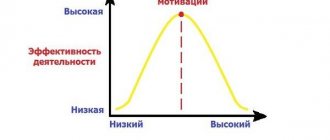In marketing and business, the “Pareto law 20/80” is often mentioned. What is it and how is it used? The famous economist of the 19th-20th centuries, Vilfredo Pareto, first brought out this pattern in 1895 with the remark: 80% of the land belongs to only 20% of the population. He proposed that all economic activity could be subject to this law. Today, businesses, as well as entire industries, corporations and individuals, often benefit from its findings in various forms.
The Pareto Law is a rule of thumb or guideline that states that 80% of the effects come from only 20% of the causes. Renowned expert Joseph Juran applied this principle to quality control, dividing the reasons into “vital” - the same 20%, and “trivial” - the remaining 80%. To simplify the terminology, the vast majority of problems are caused by a few key reasons. After this, Pareto analysis became one of the standard tools and received a second name, the “20/80 rule.” The actual numbers may vary from case to case, but the pattern is consistent and is the guiding principle used in the method of the same name.
Pareto analysis refers to basic market decision-making tools based on statistics. It allows you to select only those problems whose solution gives the maximum impact and significantly affects the final result. The 20/80 Rule applies almost everywhere, from marketing and management science to the physical world.
The Pareto chart, named after him, is a quality control tool used as part of a Pareto analysis to visually identify the most important factors and the most common defects or problems.
Pareto's 80/20 Principle: Life Isn't Fair
Uneven distribution is a major factor in real life. We will never get the same result, no matter how hard we try. Of course, in theory, any employee works well, every mistake is equal, and success is equally valuable. If this were the case, planning would be a very simple matter.
But in real life, the minority has the greatest influence on the rest. At the same time, the ratio of 20/80 is not a dogma; the sum of both numbers should not always equal 100. In different cases, the proportions can be 30/80, 20/90 or even 10/100.
The key point of the Pareto principle: a 1:1 ratio, where every effort, time or work brings exactly the same result, is impossible. More often they are distributed according to the 20/80 principle. This helps to understand that most results come from a minority of inputs. The main takeaway is that you need to focus your efforts on the 20% that make a difference, rather than the 80% that make little difference.
How does the principle help?
To spend time on things that produce results, define a task, small subtasks and establish a “central node” - a priority. Let’s say your task is “publish a book.” In this case, the “central node” is the process of writing it.
Knowing the nodes makes it easier to measure activity and get feedback. Observe under what circumstances, location and time of day you are able to write more words. For example, by devoting 20% of your time to a book in the morning, you write better and faster, and vice versa in the evening. Spend more time on fewer words due to fatigue. Accordingly, you need to concentrate your energy in the first half of the day. Identify subtasks and try to delegate them to others. Hire a proofreader to correct errors when you feel it is taking up a significant portion of your time and slowing down the “hub” or designer to produce the illustrations. If you are excellent at drawing on your own and with 20% of the time spent you get 80% of the happiness from this activity, think about retraining as an artist.
By analyzing the task in this way, we free up resources and concentrate on the most productive action. The overall result is getting better.
Related priorities
There is not always one priority on the way to the goal; there are also related ones. There is important and unimportant, and sometimes the second becomes the first.
If you write a book, but you've never shown parts of it to anyone, it may turn out bad and require a lot of revision in the end. Here it is important to periodically move away from a secondary node - “get feedback”.
To establish tasks, subtasks and nodes, perform an analysis.
Pareto method: from A to Z
The Pareto method involves performing a Pareto analysis. It is as powerful a tool for quality assurance and decision making as cohort analysis. When implemented correctly, Pareto analysis can help identify major pitfalls in any process flow. Which, in turn, will improve the quality of the product and business as a whole. This is a great approach to quickly visualize problems. As a result, all the information you need is right in front of you, and you'll see how to improve your work.
The Pareto principle is based on the 20/80 rule, which states that a large number of problems—80—are created by a relatively smaller number of root causes—20. The numbers may vary—for example, 20% of a company's products may generate 120% of its profits.
Zipf's principle and Juran's rule
In 1949, J.C. Zipf, a professor of philology at Harvard University, rediscovered and formulated Pareto's law. He revealed the following pattern: any resources, be it people, time, knowledge or something else, tend to self-organize in such a way as to minimize the cost of producing the final product. Thus, 20–30% of efforts give 70–80% effectiveness. This discovery confirms Pareto's law.
Around the same time, an American engineer of Romanian origin, Joseph Moses Juran, once again confirmed the correctness of the Pareto principle. Studying the ratio of normal and defective products in production, he came to the conclusion that knowledge of this law will help to significantly reduce the number of defects and improve the quality of manufactured products.
Juran noted that the 20/80 principle applies not only to the economic or industrial sphere, but also to many other processes. At first, Yuran's theories did not interest American economists, so the researcher went to Japan, where his ideas were in demand. Over time, the Pareto principle, discovered and formulated by Juran, nevertheless began to be actively used in the industrial sector of the United States to create methods for optimizing production.
Historical excursion
The analysis received the name of its discoverer - Vilfredo Pareto - in some sources he is called Pareto. Pareto analysis was later updated by quality expert Joseph Juran. The logarithmic mathematical model developed by Pareto seemed interesting to Juran. He checked and saw that it gives approximately the same results in most situations, from marketing and economics to applied areas. This is how the Pareto principle was born in the form in which we know it: 20 efforts give 80 results.
It is also called the law of important and trivial factors or the principle of factor sparsity. This is a prioritization tool that helps you find and divide problems into 2 groups. Important factors illustrate that many problems arise from relatively few causes. Trivial refers to a large number of remaining causes resulting in very few problems.
Set the execution order
Once you have identified the important actions, you need to put them in the correct sequence. Among them there are those that require more resources than others. Working with a contractor can be more important than interaction with a client, which, in turn, can be more important than long meetings or training.
One more tip
The Pareto principle speaks of 20% of resources that provide the main 80% of the result. But the proportion is not always like this. It varies and can be 10/90 or 24/76. The point is to become more productive and increase the first number. But don't try to turn it into 100%. Don't forget about showering, eating well, and hanging out with friends. Without completing the secondary part, the main goal loses relevance.
Plan a strategy for the “unimportant” things. If that doesn’t work, “insert” them in between “important” ones. This will distribute mental and physical stress, help you relax and get distracted. As a result, you will cope with secondary goals and maintain efficiency for priorities.
Read: How to stop being distracted or 10 ways to calm your mind
Pareto effect: examples
Pareto analysis can be applied to literally any scenario we encounter in everyday life.
Here are some examples of the Pareto effect:
- 20 percent of pea plants produce 80 percent of the yield. According to legend, this is how Pareto first thought about his principle.
- 20 percent of the time spent gives 80 percent of the effect.
- 20 percent of employees do 80 percent of the work.
- 20 percent of drivers are responsible for 80 percent of accidents.
- 20 percent of your wardrobe is worn 80 percent of the time.
- 20 percent of patients use 80 percent of health care resources.
- 20 percent of employees take 80 percent of their sick days.
- 20 percent of household items consume 80 percent of electricity.
- 20 percent of the entire text will contain 80 percent about the topic you are looking for.
- 20 percent of all people in the world receive 80 percent of the world's income.
- 20 percent of the tools in a set are used 80 percent of the time.
- 20 percent of a company's products account for 80 percent of its gross margin;
- 20 percent of borrowers account for 80 percent of late loan payments.
- 20 percent of the features of an app, website, or smartphone are used by 80 percent of customers.
- 20 percent of the menu accounts for 80 percent of the restaurant's turnover.
The list goes on and on. Just watch what is happening around you, and you can find a lot of similar examples. Be it business, sales, marketing, quality control or any other field.
By the way, economic theory has its own “Pareto double”. The concept is called diminishing marginal returns or the law of diminishing returns. The implication is that every extra hour of effort a worker expends produces less “energy” and ultimately results in a lower quality score overall. Thus, unimportant details take up a lot of time and resources, while essential ones, that is, benefits, end up “overboard.”
To increase personal effectiveness
If you grab onto a hundred things at once, without being Julius Caesar, this law is for you. The Pareto rule is a great help for planning your day, week, and your whole life. A person spends 20 percent of his time on useful activities, and 80 percent on nonsense like hanging out on social networks and looking at photos of cats. You can’t plan your day, you get scattered about a bunch of small things, you procrastinate, and in the end you don’t get anything done. Learn to focus on 20% of the main investments, ideas, factors that will work, and deal with the rest on a residual basis. A simple example: you are a night owl and are swinging around lunchtime. What's the point of coming to work at nine in the morning and making important appointments in the morning? You won’t remember half of it anyway and will feel like a dog in a blanket. It will be much more effective to shift your work schedule closer to the evening and plan all your tasks after lunch.
Expert commentary
“We have a responsibility to make our customers happy in any way possible!”
Alexey Molchanov, founder of the international IT company Envybox
The current situation in the country and the world is gaining more and more momentum every day.
Today, every entrepreneur asks the question: “What will happen to my business now?”
If you succumb to general panic and “freeze” the company’s activities, then this will not lead to anything good. If you see that a crisis is inevitable and the company’s income is already beginning to decline, do not suspend your activities. Do not under any circumstances reduce your advertising costs or stop promoting (unless, of course, you are closed due to Government Decree).
Direct maximum efforts and attention to promoting your company and increasing the flow of new clients.
In order for you to have an understanding of how to behave during a crisis, I will share with you useful tools that helped us not only overcome the crisis, but also emerge victorious from it.
Below you can use simple and accessible tools for any company to attract a stable flow of new customers or return existing ones. And also, as a bonus, get free use of our services
to increase requests from the site within 7 days and a 30% discount on their connection. We wish you good luck, new clients and big sales!
Pareto efficiency: advantages and limitations
Advantages
Pareto analysis helps:
- identify the root causes of problems;
- prioritize the main problem and try to fix it first;
- gain insight into the cumulative impact of issues;
- plan corrective and preventive actions;
- improve problem solving skills;
- increase the efficiency of quality management;
- make important decisions;
- manage time at work or in your personal life;
- carry out overall performance management;
- plan, analyze and troubleshoot;
- manage changes.
Restrictions
- Pareto analysis cannot by itself find root causes. It must be used in conjunction with other analysis tools.
- Doesn't show the severity of the problem.
- Focuses on past data where damage has already been done and described. Sometimes it may not be relevant to future scenarios.
- It cannot be applied to all cases.
Strategy 4: Simplify access
Make access to the “effective minority” as easy as possible. This simple strategy saves time and speeds up your work.
Examples:
- Add to “Favorites” those contacts with whom you communicate most often. Set speed dials for your most popular phone numbers.
- Assign hotkeys to programs that you use especially often. You can also place these programs on the desktop, in the Quick Launch bar, or even in AutoPlay.
- Set up text autocorrect for your most commonly used words and expressions. If, for example, you often write letters for work, then you can add the name of the company, its details, full name to the autocorrect dictionary. directors and standard politeness formulas.
- Keep contacts of VIP clients, main suppliers and main debtors at hand. Make it easier to reach those employees with whom you interact most often.
- Place the tools and materials you use most often close to you.
- Arrange the hottest items so that they are easier to release (at the very beginning of the warehouse or next to the counter).
- Have a separate cabinet for those things that you constantly use. For example, make a separate “tea-drinking shelf”: your cup, tea, coffee and sugar bowl will stand there.
The Simplify Access strategy has a very wide scope and can be useful in virtually any type of activity.
What is a Pareto chart
There are 7 main data analysis tools. These include flowcharts, checklists, mind maps, and various types of charts such as cohort analysis and Pareto charts.
A Pareto chart is a statistical chart that ranks causes or problems in descending order of their frequency and their cumulative impact. This helps to highlight the most important factors from the whole group. In quality control, it is often used to indicate the most common sources of problems or the most common occurrences of problems.
A Pareto chart has a bar graph and a line graph coexisting together. In a Pareto chart there is 1 X axis and 2 Y axes. The left x axis is the number of times or frequency of problems occurring. The right Y-axis is the cumulative percentage of problems. The problem with the highest frequency is listed first.
The histogram represents problems in descending order. The line graph represents the cumulative percentage in ascending order.
When to use a Pareto chart
It is used in cases where:
- there is a lot of data and it needs to be systematized;
- you want to communicate key issues to stakeholders;
- there is a need to prioritize tasks;
- the relative importance of the data needs to be analyzed.
A Pareto chart can help you quickly identify the most important factors affecting the efficiency of your overall process. But selecting problems to fix isn't everything. Additional cost-benefit analysis is required. If you have 1 factor “responsible” for 50% of the problems, and another 3 factors causing a total of 30%, don’t rush to make a seemingly obvious solution. Eliminating the underlying factor may cost you millions of dollars. Whereas fixing the other 3 will cost much less. In this case, you need to proceed from economic feasibility and gross margin, and not start from the place that the problem occupies in the Pareto analysis.
Some tips
1. Purposefully look for imbalances in your life and work. The Pareto Principle is always a sign that we can improve our results.
2. Collect statistics. Of course, the strategies described above can sometimes be applied “by eye”. For example, we don't need statistics to add popular phone numbers to Favorites or rank tools by frequency of use. But if we are talking about something more serious, it is better to rely on accurate data.
3. Use a full sample. If, for example, the company currently only has 10 clients, it is unlikely that any decisions should be made based on this data.
4. Test your ideas. Before you do anything risky or expensive, try testing it. For example, we decided to slightly increase prices on our best-selling products (strategy #5). In this case, we should first raise prices on 2-3 products and observe the result.
5. Repeat the analysis periodically. Some distributions change over time: demand for goods rises and falls, customers come and go, new pages appear on the site, etc. Because of this, old solutions can become useless and even harmful.
Steps to Create a Pareto Chart
We will go through the process of creating a Pareto chart in Excel step by step so that it is clear where and how the data comes from and what meaning it has.
Select data
List the data that needs to be compared. The data can be a list of problems, elements, or cause categories. For example, provide an analysis of traffic by channel or data processing speed.
To better understand how Pareto analysis is applied, let's look at an example in which a marketing manager wants to analyze the root causes affecting the efficient operation of a call center. For analysis, he uses data from an end-to-end analytics system - a list of factors that contributed to the problem.
Select data format
Data can be measured from the following perspectives:
- Frequency—for example, the number of times a problem occurs.
- Duration - how long it will take.
- Cost - how many resources it requires.
In our scenario, we will take the number of times or frequency that a particular problem was observed over a certain period.
Select time period
The next step is to select the duration of data analysis, for example, month, quarter or year. In our scenario, we will take a number of complaints received over the last month of the call center’s operation in order to analyze the main reasons for the decline in efficiency and make online retail better .
Calculate the percentage
After collecting data, place it in a table. In our example it looks like this:
| Problem | Frequency |
| Mistakes in switching to a specialist | 10 |
| Lack of information from the operator | 30 |
| Failure to follow the conversational script | 40 |
| Errors in transmitted information | 18 |
| Other | 2 |
| TOTAL | 100 |
Then create a Percentage column. Calculate the percentage of each problem type by dividing the frequency by Total and multiplying the resulting figure by 100%. For example, for the “Others” line it looks like this: (2:100)*100%=2%
| Problem | Frequency | Percent |
| Mistakes in switching to a specialist | 10 | 10% |
| Lack of information from the operator | 30 | 30% |
| Failure to follow the conversational script | 40 | 40% |
| Errors in transmitted information | 18 | 18% |
| Other | 2 | 2% |
| TOTAL | 100 | 100% |
Sort data in ascending order
Sort the percentages from largest to smallest. If you are making a table in Excel, use the “Data” - “Sorting” menu. The sorted columns will look like this:
| Problem | Frequency | Percent |
| Failure to follow the conversational script | 40 | 40% |
| Lack of information from the operator | 30 | 30% |
| Errors in transmitted information | 18 | 18% |
| Mistakes in switching to a specialist | 10 | 10% |
| Other | 2 | 2% |
| TOTAL | 100 | 100% |
Calculate the cumulative percentage
The cumulative percentage is calculated by adding the current category percentage to the previous cause category percentage. The last cumulative percentage value will always be 100%.
In the first row of the table, the cumulative percentage value does not change and is always equal to the percentage value. This is the most common category or problem after sorting by descending values. In our example it is 40%.
For the remaining rows, you need to add the current percentage value with the percentage value above. For example, for the operator’s lack of information, the cumulative percentage will be 40+30=70%.
| Problem | Frequency | Percent | Cumulative percentage |
| Failure to follow the conversational script | 40 | 40% | 40% |
| Lack of information from the operator | 30 | 30% | 70% |
| Errors in transmitted information | 18 | 18% | 88% |
| Mistakes in switching to a specialist | 10 | 10% | 98% |
| Other | 2 | 2% | 100% |
| TOTAL | 100 |
Plot a histogram
Based on your data, create a histogram with an x-axis representing the different causes of problems. The Y-axis should be the frequency of times problems occurred and their cumulative percentage.
To create a histogram in Excel, as in our example, select the entire table except for the “Total” row. Select "Insert" - "Charts" - "Clustered Histogram" from the menu. On the resulting histogram, click the funnel icon and remove percentage data from the chart filters.
You should now have the following view:
Draw a line graph of cumulative interest
Draw a line graph connecting the cumulative percentage values. To do this, in Excel, select the cumulative percentage columns in the chart, right-click and select “Change Series Chart Type” from the menu.
In the window that opens, set the following values for the “Cumulative Percentage” column: “Line” graph type and check the box that this is an auxiliary axis.
The diagram will look like this:
Analyze the Pareto chart
Check the cumulative percentage line that starts at 80% on the Y axis and then moves lower on the X axis toward the beginning of the graph. This part is what constitutes the “vital” factors.
The rest of the graph is trivial. Based on the Pareto chart, the Pareto principle or 80/20 rule is applied. This way we can clearly see which improvements will give the maximum result in the market. In our scenario, the first 2 reasons account for 80% of the problems.
Winner takes all
The far-reaching implications of the Pareto principle have been revealed to the general public a century after Pareto discovered it, in recent discussions about the astronomical and ever-increasing incomes of superstars and the wealthiest few in certain professions.
Director Steven Spielberg earned $165 million in 1994. Joseph Jamiel, the highest paid lawyer, received 90 million. It’s just that directors and lawyers who are competent in their field, of course, earn negligibly little in comparison with these amounts. In the 20th century, massive attempts were made to equalize incomes, but inequality, eradicated in one area, suddenly appears in another. In the United States, real incomes of non-managerial workers fell by 14% between 1973 and 1995. In the 1980s, all income growth went to the top 20% of people, and a mind-boggling 64% of all growth went to the top 1%. The lion's share of all private equity holdings in the United States is in the hands of a very few owners: 5% of American households hold approximately 75% of all assets.
If we look at the role of the dollar in the modern world, we see the same picture: almost 50% of world trade is settled in US dollars, which far exceeds the 13% US share of world exports. The world's foreign exchange reserves are 64% dollars, although the US share of gross domestic product in global gross product is only slightly more than 20%. The 80/20 principle will work always and everywhere unless you make a conscious, persistent and massive effort to overcome it.
Tools in Microsoft Excel to create a Pareto chart
We have explained the process of creating a Pareto chart in Excel step by step so that you understand how it works. But in the future you won’t have to do this. And that's good news because you can hand over all the work to software! You don't have to do all the calculations yourself—Microsoft Office has a built-in option for creating Pareto charts. All you need is data to load into an Excel spreadsheet.
A Pareto chart can be easily created using Microsoft Word, Excel or PowerPoint. All details can be found in the Microsoft Office manual.
To help you see how simple this is, let's take another example - a list of continents ranked by population according to Worldometer.
| Continent | Population |
| Asia | 4641054775 |
| Africa | 1340598147 |
| Europe | 747636026 |
| North America | 592072212 |
| South America | 430759766 |
| Australia, Oceania | 43111704 |
| Antarctic | 0 |
Select the entire table and in the “Insert” menu select “Charts” - “Histogram” - “Pareto”.
The diagram is ready and can be analyzed immediately.
2 of the 7 continents - Asia and Africa - account for 83% of the world's population. And the remaining 5 continents - Europe, North America, South America, Australia, Antarctica - make up 17%.
Additional Pareto chart templates are available on the Microsoft support site. You can download and modify as per your requirements. The chart is also used in popular data visualization tools such as SAS, Tableau and others.
Strategy 6: Finding patterns
This is probably the best application of the Pareto principle. Try to figure out what the “effective minority” has in common? Why is it so effective?
Here are some examples:
Example 1. A company produces confectionery products: cakes, pastries, desserts. Below is a list of her best clients. What do they have in common?
Answer: for the most part these are catering establishments. These are the clients you should look for first.
Example 2: A grocery store compiled a list of its best-selling products for June. What do they have in common?
Answer: with the exception of bread, these are seasonal products that are consumed in hot weather. You can offer customers other products of the same type, for example, draft kvass.
Example 3. Below is the top most read articles on the site. What do they have in common?
Answer: These are mostly guide articles that readers use as online references. Perhaps the site needs even more such materials.
It is not always possible to find patterns. But if we succeed, we have the opportunity to significantly improve our results.
Pareto Distribution: 5 Steps to Identify Important Causes
- Create a table listing the factors and their frequency as percentages.
- Arrange the lines in descending order of importance of the reasons, that is, the most important reason first.
- Add a column with cumulative interest to the table.
- Create a Pareto chart.
- Draw a line at 80% increments along the Y axis parallel to the X axis. Then drop the line at the point where it intersects the curve on the x axis. This point on the x-axis divides the graph into important causes on the left and less important causes on the right.
This is a simple example of a Pareto chart using sample data showing the relative frequency of problems. It will allow you to see which 20% of factors cause 80% of the problems and where you should focus your efforts to achieve maximum effect. In some ways, the construction principle is similar to SWOT analysis, which also allows you to see the strengths and weaknesses of a business.
The value of the Pareto principle for any project is that it reminds you to focus on the 20% of things that matter. Of what you do during your project, only that 20% really matters. They are the ones who give 80% of the results. Identify these things first and focus on them, but don't completely ignore the remaining 80%, their turn will come later.
Don't forget that effective implementation of Pareto analysis requires a reliable data source. When done correctly, analysis can help you break down a larger problem into smaller pieces and focus on where it's worth putting in the effort.
Principles of law
- To achieve most of your plans, it is enough to put in a small amount of effort.
- Much of what we usually do to implement plans is ineffective or useless.
- What seems logical at first glance is not always correct.
- Most failures depend on a small percentage of unfavorable factors.
- Striving for a 100% result is irrational: it will require 100% effort. While for 80% of the result, 20% of actions are enough.
Generally 80/20 is good for business
- Management - 80% of results come from 20% of employees.
- Sales - 80% of profits come from 20% of products.
- Quality management to identify the causes of defects - 80% of problems come from 20% of the causes.
- Productivity - 80% of sales turnover is achieved by 20% of sales staff.
- Customer base - 80% of purchases are made by 20% of customers.
- Sales geography - 80% of buyers are concentrated in 20% of the geographic areas where the business operates.
- Complaints – 80% of complaints come from 20% of customers.
- Advertising – 80% of business comes from advertising, which comes from 20% of channels.
- Employees - 80% of the work is done by 20% of the employees.
- Suppliers - 80% of the goods purchased come from 20% of all suppliers.
- Meetings - 80% of important discussions happen in 20% of meetings.
- Profit - 80% of it comes from 20% of sales or 20% of customers.
Strategy 3. Redistribution of resources
This strategy is a natural development of the previous one. Its essence is as follows:
Redistribute resources so that most of them go to the “effective minority” and less to the “ineffective majority.”
Here are some examples:
- Targeted advertising. If advertising in 20% of regions gives 80% of conversions, you need to increase bids for effective regions and lower for the rest. In the same way, you can configure the ad display time.
- Customer service. Adjust customer service costs (ACS metrics) based on the revenue they generate. Some companies do this by introducing different tariffs: “Economy”, “Standard”, “Premium”.
- Time management. Allocate your time so that most of it is spent on the most important tasks. For a more accurate time allocation, try ABC analysis.
- Trade. Inventory of a product should depend on how well it sells. This rule not only helps to rationally use warehouse space, but also reduces the likelihood of cash gaps.
This strategy has the same problems as the “Discard the Ineffective” strategy: thoughtless reallocation of resources can lead to trouble. Assess the risks and be sure to test all innovations.
Marketing according to Pareto's law: TOP-10
The guru for applying the Pareto principle to marketing is Perry Marshall. He declared this principle to be practically infinite and proposed to use its results nonlinearly, but exponentially. What does this mean? Let's say that 20% of staff errors lead to 80% of customer complaints. If you take that 20% and look at it as a whole, you can see that 20% of that 20% is again “responsible” for 80% of the complaints. This operation can be done one or more times. In the end, the numbers will be so small that there is no point in analyzing them. But when working with big data, this method can significantly increase marketing KPIs.
We have selected the top 10 solutions that will help harmonize the Pareto principle and marketing strategies.
80% of the company's money comes from 20% of customers
The majority of product development efforts and marketing strategies should be focused on the 20% of customers and users who generate the largest amount of revenue for the company. But identifying such people is not the most important thing for the correct application of the Pareto principle in terms of the client base. It is much more important to find and select a similar target audience that will give an even greater response. You can do this in the following ways:
- Segment the audience by time of purchase - for the previous month, for example. Select among them those who did this more than 1 time and bought the most.
- Find out where they came from; the ads these users reacted to and the articles they interacted with. Strengthen these channels and content.
- Conduct research into the demographics and other characteristics of the target audience. This will allow you to target as efficiently as possible.
Don't waste time and money on the 80% that don't make money. Focus on the few - this usually means only about 20% of the total. Take care of large and regular customers first. Target 20% of your advertising campaigns and presentations to the best. Even if 80% of people don't like them, that's okay. Because they will resonate with your most valuable customers and users.
80% of all online sales come from 20% of products
The most popular and hot-selling products make up a small part of the total online retail volume. Of course, it is useful to have a wide choice. But make an effort to highlight those 20% of products that bring in the most profit. And concentrate on further promoting them. They are already ordered most often, and if the number of buyers increases further, this will bring tangible benefits.
80% of traffic depends on 20% of key phrases
The development of the semantic core and its constant replenishment is an important part of the SEO strategy. But there are few popular keywords, although they attract most of the traffic to the site.
Check which 20% of keywords, search engines and sites bring the most visitors through contextual advertising and SEO promotion. Use these strengths. To analyze and highlight the most significant ones, check the results in Google Analytics, Yandex.Metrica or the end-to-end analytics dashboard to see the whole picture. To further develop SEO using the Pareto method, it makes sense to do the following:
- focus on the most important keywords, “tailor” all areas of business to their area;
- promote among those who need relevant information and they find it from you;
- provide even more content on this topic.
80% of leads come from 20% of content
Content marketing is a powerful means of attracting customers. What if you determine the main source of leads? Surely most of the potential clients and applications come only from a limited number of resources. When a company reviews its content marketing strategies, it's easy to take note of the best-performing content assets and turn them into cash cows.
80% of social capital comes from 20% of social media posts
Take a closer look at your social activity. Most likely, you will be able to highlight those 20% of posts and updates that generate the most reactions, likes, shares and reposts. Find the commonalities of “high-performing” social media posts and apply them to your other social media content. The results of working with social networks are easy to check, for example, using end-to-end analytics.
80% of traffic comes from 20% of resources
Traffic to any website depends on different sources. According to the Pareto principle, there is a small part of the resources from where most of the visitors come. A quick glance at Google analytics, or even better, at the end-to-end analytics system, will show you the most popular referral sites and advertising platforms.
80% of conversions come from 20% of website content
When you're optimizing your sales funnel and conversions, it's a good idea to focus on your top 20% of content that converts. And it doesn’t matter whether it’s a product card, a feature article, or something else. Whatever the selling content that leads to conversions, there is little of it, and it should be dealt with first.
80% of sales come from 20% of ads
If you operate in the field of digital marketing, then most likely you use Yandex.Direct and Google Ads with their wide retargeting capabilities. Perhaps the marketing strategy also includes separate image banners, articles on thematic sites or paid posts on social networks. Where do the most promising leads come from? The correct answer will be found where there are the most conversions.
Once you've identified those top 20% of channels where your top leads come from and identified your lead magnets and which ads are effective, place them where they actually work.
80% of complaints come from 20% of customers
Just like the largest portion of sales, the greatest pain comes from 20% of customers. These are consumers that your customer service team often knows by name. These people are not members of the circle of careful reading of instructions or are simply dissatisfied with everything in the world.
They and their problems take up most of the time. which support and service spend on customer service in general. You will definitely need written scripts on how to get rid of such “vampires” in the shortest possible time.
80% of conversions come from 20% of email subscribers
Focus on profitable subscribers. The majority or 80% will not buy anything. But the 20% that makes money should be the focus of your email marketing strategy. This means that emails sent to subscribers should be tailored to appeal to the “top” 20% buyer segment.
Ways to measure efficiency
To understand exactly which tasks are most effective, it is recommended to constantly keep a plan and focus on what really matters. But the most important thing here is the ability to concentrate efforts and not waste them.
There are no direct ways to measure efficiency according to Pareto's law. The assessment is strictly subjective - you evaluate the result obtained by comparing it with your own expectations. You can, of course, follow the general recommendations...
- Things. Remember when I said we tend to wear less? For the Pareto principle to really work in this area, try to make smart purchases, weigh the pros and cons before spending money. And if there are things that you don’t use at home that accumulate, throw them away or reuse/recycle them so as not to clutter the surrounding space.
- Information. Even when the virtual space on your devices fills up, it somehow affects your personal productivity (my sacred rule: order in things = order in your head). Delete files and programs that you do not use, store truly valuable data and do not waste device resources with junk.
- Relationship. As sad as it may sound, we pay our main attention to only 20% of the people around us. And then, not everyone will go on with us in life; some will be left behind for various reasons. Don’t let your surroundings look like a walk-through yard, otherwise you will have no one to share your joys and sorrows with.
- Job. Many people behave strictly at work, but outside of it they behave completely differently. And all thanks to the corporate culture - in a team, people work for the benefit of the company. But even here the Pareto law can be traced: for example, 80% of employees bring only 20% of the profit. To avoid being one of the “outsiders,” control your workload, distribute and delegate tasks, fulfill your direct responsibilities and try not to be distracted by extraneous factors.
- Self-education. Try to take only those courses and read books whose content will be useful to you in the future (you can, of course, argue here - we often read for the sake of the process itself or interest). Think about your future, plan your own development path, learn and improve your own skills.
How to Use the 80/20 Rule to Make Decisions
Set goals in 80/20 style
Take a piece of paper and write down what you do every day. Then circle the tasks that provide the best results for your job. Finally, check with management about what responsibilities are considered key to you. Based on the data obtained, divide your schedule into effective tasks and all others. By the way, you can also manage your own personal time to simplify time management.
Ask a simple question
Whenever you are faced with a new project or task, ask yourself a simple question: “Is this task helping or hindering 80% of my activities?” If the answer is “It interferes,” it should not be addressed in the first place.
Cross out what you don't need
Your checklist should only include what is essential, important, and meaningful. If an activity does not bring satisfaction or measurable results, you should abandon it. Either delegate it to someone else or eliminate it completely.
Don't add, replace
Remember, your time is limited. If you feel a new project is important enough to work on, it should replace another low-value activity.
Learn to procrastinate
If you know that the next project is not 80% of your activity, then it is quite normal to put it on the list of things that will be done “someday”. Set aside this action consciously, knowing that you will only do it if it becomes more important later in your life.
80/20 practice is a skill that takes time to develop. At first, it will be difficult to give up projects and activities that you once considered important. However, over time, you will develop an intuitive understanding of what is truly valuable.
Reviews and comments
What do you think about the Pareto principle? Is this the law or manipulation of facts under surveillance? Can it be used successfully? Join the discussion, leave comments below and share the article with your friends.
We also recommend reading:
- Storytelling
- The Kaufman Method: How to Master (Almost) Anything in 24 Hours
- How to simplify things
- How to develop a two-wire focus
- How to quickly instill a skill in yourself
- Strong Personality Skills
- The Iron Triangle of Project Management
- B-Alert: personal effectiveness system
- Richard Koch "The 80/20 Principle": a summary
- The Seven “Rs” of Time Management
- How to use the Pareto principle for your career
Key words:1Time management
Time management 80/20
In the modern world, the 80/20 principle is used to improve time management. The basic idea is this: if you have a list of 10 tasks, then 2 of them will “cost” the same as the rest.
In other words, 80% of things should be done in 20% of the time. The main idea is that it is impossible to do everything. But this does not mean that you should do nothing at all or spend less time on things. You just need to focus on those tasks that directly increase efficiency and overall performance results.
For example, it is unwise to spend hours fixing a broken website or processing requests from a call center. It is better to outsource or delegate these tasks. This will allow you to concentrate on the things that really matter. Where to start using such a system?
Review your checklists
It's time to change the way you write checklists. Typically these lists consist of simple elements. And they may not contain the most important things to do. Instead, checklists should reflect priorities and consider whether a particular task is worth spending energy on.
To better manage your time, start by prioritizing your tasks based on the amount of effort you expend. Number the checklist items from one to ten. At the same time, under number 1, place the most inexpensive task in terms of time and effort. Then think about the potential positive outcomes of all these actions. Also designate them with numbers from 1 to 10. Ten is assigned to the one that has the greatest impact.
The next step is to create a new ranking of the items on your checklist. Divide the amount of effort by the possible results. This will give you the to-do list you need to manage your time more effectively and improve your results. Those that bring maximum effect should be done immediately. Others, requiring large expenditures with little “exhaust”, should be postponed or even eliminated altogether.
Evaluate all your goals and objectives
Another approach is to identify the 20% of your tasks that are truly valuable and will produce 80% of the impact. You can achieve this by asking questions such as:
- Do I consider all my tasks and functions urgent?
- Am I spending too much time on specific tasks?
- Does this task help me achieve my goals?
- Am I the most qualified person for this job? Or should someone else do it?
Having assessed your tasks, you can move on to goals. Focus on the 20% of your activities that are needed to achieve them.
This means that it is relevant to the long term or can quickly improve your life in just a short time. Or spend your time the way you want, but delegate tasks outside your competence.
Determine when you are most productive
Everyone has their own time interval when a person is most attentive, focused and energetic. Some are ready to start the day bright and early. Others are most productive at night. If you're a morning person who wakes up at 5 a.m., plan your priorities accordingly. It is better to do the most important things that bring maximum impact before lunch, and not after, when your batteries run low. The opposite is true for “night owls” - do not do anything important in the morning, transferring the main activity to the evening. It's a proven way to get more done every day.
Get rid of distractions
We are surrounded by distractions. Whether it's an email notification, a phone call, a knock on the door, or construction work going on across the street from the office. Unfortunately, no matter how hard you try, they are inevitable. But you can minimize them by implementing the 80/20 rule. After all, 80% of distractions come from 20% of the sources.
Write down all the times you get distracted for 3-4 days. Then make a list and think about which items bother you the most. Email, social media notifications, unscheduled visitors, or background are the most common culprits. Find ways to get rid of them. For example, you can turn off all signals on your phone, close your office door, or wear noise-canceling headphones.
Avoid small jobs
There are always “menial” tasks that can be assigned to someone else, and that’s 80%. For example, you can hire a personal assistant to pick up dry cleaning or manage your Instagram account. You can also order cleaning services for your home and office. This certainly won't come for free, but it can free up additional time resources. For what? Do the 20% of things that are truly valuable.
Take breaks
Racing at the same speed leads to burnout. Allow yourself regular breaks. Rest as you like, in a ratio of 20/80 or 1 day a week. These apparent “downtimes” will help you reboot. Don’t feel guilty about not getting anything done, give yourself a “mini-vacation” from your worries - and enjoy it. Then your productivity will increase significantly in the remaining 80%.
Strategy 1 (dangerous). Discard the ineffective
The first thing that usually comes to mind after becoming acquainted with the Pareto principle is getting rid of the “ineffective majority.” After all, if “80% of efforts produce only 20% of results,” then why bother making these efforts at all?
Alas, it's not that simple:
“Discard what is ineffective” is the most dangerous and often inapplicable strategy.
Here are some examples:
- 20% of products bring 80% of the store's profit. Do I need to give up the rest of the product? No: without a full range of products, the store will lose its attractiveness to customers and its revenue will fall.
- 20% of customers bring 80% of the company's profit. Do I need to refuse other clients? No: the company will become dangerously dependent on the remaining customers. As soon as one of them leaves or reduces activity, the company will begin to incur losses.
- 20% of our tasks provide 80% of the results. Is it possible not to do other tasks? No: “ineffective things” often help us maintain quality of life and avoid troubles. For example, without the same cleaning, the apartment will quickly become overgrown with dirt.
Sometimes an “effective minority” simply cannot exist without an “ineffective majority.” For example, 80% of all discoveries are made by approximately 20% of scientists. Does this mean that other scientists are not needed? No, because they create the conditions for these discoveries.
In some areas there is a constant rotation between the “effective minority” and the “ineffective majority”. For example, “unimportant” clients eventually grow into VIP clients, and former VIP clients go bankrupt. If the strategy of pruning is thoughtlessly applied here, the “effective minority” will only shrink over time.
However, the “Discard the ineffective” strategy may be quite appropriate in the following situations:
- When you need to “squeeze” the maximum out of limited resources. Let's assume that we are running an advertising campaign with a very modest budget. We notice that 20% of advertising channels bring us 80% of clients. In this case, eliminating the remaining channels will allow us to get the most bang for our buck.
- When we check or test something. For example, we have just created a website and don’t yet know what topics and formats readers will like. In this case, we can publish a series of test materials, collect statistics and exclude 80% of what readers are not interested in.
- When the “ineffective majority” becomes a real liability. For example, if slow-selling products are poorly purchased due to their low quality, then this is a direct threat to the company's reputation.
But even where this strategy is applicable, it is better to be careful and not cut from the shoulder. It is advisable to test all changes first: if problems arise, you can quickly replay everything.
Pareto principle: execution cannot be pardoned
It’s a big mistake to think that the Pareto principle can be applied to absolutely everything that happens around us. Some companies get so carried away by statistical calculations and charts that they forget the main thing. Pareto's Law cannot be applied to all areas of business, marketing and economics. It is just a starting point that allows you to evaluate the results statically and perform a primary analysis. You cannot trust the information received 100 percent. Because it reflects only what has already happened and cannot predict the future. Of course, the data obtained needs to be supplemented with the help of various tools for analysis, research, testing and analytics data.
Another common misconception is to apply the Pareto principle to the amount of work done. If only the first 20% are important, some say, then why bother with the remaining 80%? Of course, 80% of the road can be built in the first 20% of the time. But do motorists need this piece of asphalt or is the whole highway more important to them? Or at least take works of art. There is interesting evidence that Leonardo da Vinci painted his Mona Lisa in a very short period. And then he spent years finalizing his masterpiece. But does this mean that the mysterious smile of the woman in the painting would have been so perfect if he had stopped at the first 20 percent?
The basic rule when conducting Pareto analysis is to separate the flies from the cutlets, and not arrange their union. Do not confuse the concepts of 20 to 80 and one hundred percent quality. Pareto's Law is just a way to highlight the most important thing in the current moment and pay special attention to it. Not a panacea or a magic pill. If you keep this in mind, a lot of things in marketing and business can be done better!
Memo
To achieve success using Pareto's Law:
- Make efforts in those areas of life where your abilities will provide the best results at minimal cost.
- Identify resources that will help you move toward your goal most effectively. Strengthen and develop them.
- Don't waste time on ineffective resources.
- Of all the paths that lead to your goal, choose the shortest. Let the result be not 100%, but 80%, but you won’t have to wait long, and there will be time to conquer new heights.
Do you use Pareto's law in life? What principles do you follow to be more effective?
- Tweet
- Share 0
- VKontakte
- 0
- Login to have your vote counted










